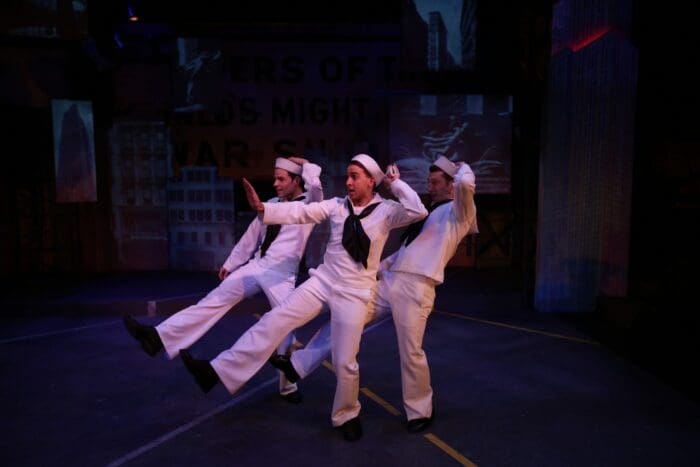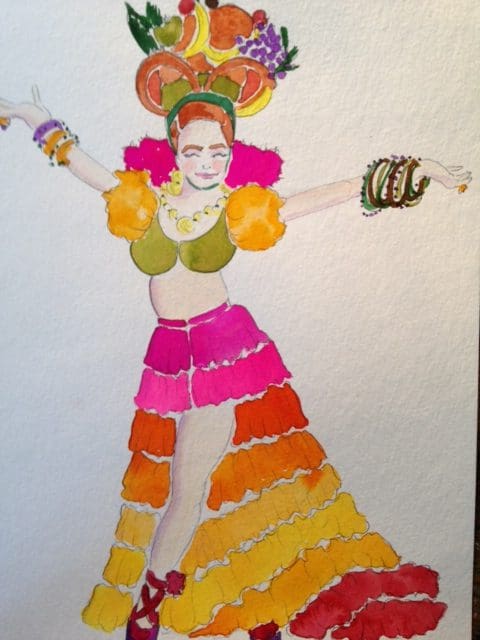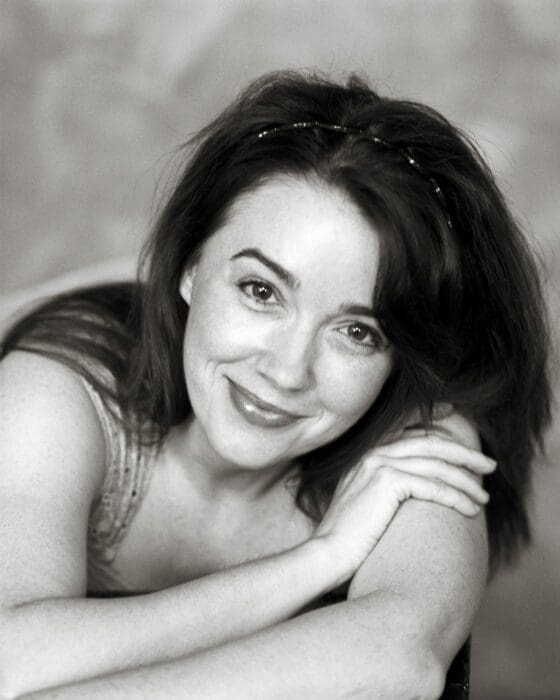Before we announce the winners of the 2013 My Theatre Awards, we’re proud to present our annual Nominee Interview Series.
NOTE: If you were nominated for a 2013 Boston My Theatre Award, and you would like to participate in our Nominee Interview Series, please email Brian at brian@myentertainmentworld.ca.
Kathleen Doyle imagined and designed the sharp, authentic, and visually-pleasing costumes for The Lyric Stage Company of Boston’s On the Town, perfectly helping to shape the characters and their stories. For her efforts, she earned a 2013 Boston My Theatre Award Nomination for Best Costume Design. In her interview, Kathleen discusses her “character design” philosophy, her extensive research into the period and its clothing and accessories, and, finally, her exciting new project, featuring bird puppets!
Kathleen, great to talk with you about your work and theatre life. How did you get start designing costumes? What is your experience and background in theatre and the arts?
I’ve always loved the stage and the directness of live performance. I’ve always found the experience of a live performer telling you a story, a personal GIFT. A storyteller soulfully imparting a story is beautiful thing. As a child, I loved to write songs and stories, sing, dance, tell stories. I was constantly trying keep my sisters and family captive as my audience. I’d perform, and make my dolls and stuffed animals perform. And then I started making the dolls, making their clothes, making the sets, lights, and creating small theaters.
With weekly payments, I purchased a Singer Sewing Machine in high school and I taught myself how to sew. But I didn’t really learn about construction until I got my first job after college, at Disney World’s Creative Costumes. Then I went to apprentice at The Santa Fe Opera. And from there, I was in it to win it. Just hooked on theater, opera, dance, live performance—for life!
What draws you to costume design above other theatrical design?
Costume design to me is character design, not clothing design. I also work in animation and puppet design. And in these worlds, the discipline is called character design. And that’s what I do. Working with the director and the creative team, I suss out who this character is and design their ‘being.’ So, costume design revealed itself to be visual story-telling.
What draws you to work on certain projects above other projects?
Working with people I respect and admire draws me to projects. Also, of course, I’m drawn to the texts, the music, the concept. And I’m drawn to problem solving. I love ‘cracking open’ the idea or ‘problem’ and figuring it out.
What are some of the companies with which you have worked?
Locally, I’ve worked with The Lyric Stage, The Boston Symphony Orchestra, Opera Hub, Actor’s Shakespeare Project, Bridge Repertory Theater of Boston, Boston Public Schools. All fantastic organizations. In New York and beyond, I’ve worked with Jazz at Lincoln Center, La MaMa, 59E59 Theaters, The Joyce Theater, The Kennedy Center. I recently worked at The Daegu Opera House in South Korea.

The costumes were very authentic and varied. How did you research the clothing of the time period? Did any particular ideas or concepts inform your designs?
Oh, the research! I poured over primary source images at the library, magazines like Time, Life, and McCalls were especially useful. The advertisements in magazines are so informative because they describe the clothes so meticulously. The Sears & Robuck catalogs of the 1940’s were terribly useful. I went to a couple of excellent army/navy stores to FEEL the uniforms, hold the heavy shoes, study the hems of the skirts. World War II had tremendous influence on the daily lives or our grandparents and great-grandparents, and I wanted that to be evident in every character. For example, Hildy the Taxi Driver—a woman picking up a man’s job while he was serving in the war, and simultaneously picking up his big, boxy plaid coat and hat, then going home to don a cotton rose-printed, home-spun apron with heart pockets to show how she could still cook and bake. Women’s hem lines rose with fabric rationing rules, accessories were important and less expensive to replace than a whole dress or suit, so women focused on what they could afford.
Wow. I just loved this show and diving into the war-time research, which also meant researching prior years because many men and women were wearing hand-me-downs and re-appropriating these looks. There were also fascinating designers emerging in the 1940’s inspired by surrealism, and Europe was looking at America and we were looking at Europe for fashion inspiration, but also to define what made us different. This was the first renaissance of sportswear since the 1890’s. And that was a very American concept. Such a fascinating era, because, like you said, the variety of choices suddenly available.
What was the most challenging part of designing On The Town?
Getting it right! I knew there were WWII veterans, former nurses and soldiers, coming to the show. And I knew there were people who may have been children, but who had lived through the war coming to The Lyric. And I wanted this show to be like a valentine to them.
 Do you have a picture or sketch that you could share to show our readers more about it?
Do you have a picture or sketch that you could share to show our readers more about it?
Sure. Thank you for asking. [She sent us 5, here’s our favourite]:
Tell us one thing that made you happy today.
Seeing my seven bird puppets sing come to life in a rehearsal for Mozart’s The Magic Flute with the Boston Symphony Orchestra!
Bird puppets, how fascinating! Can you tell us more about this project?
I’m designing a family opera, Mozart’s The Magic Flute with the Boston Youth Symphony Orchestra, and it opens March 30. I’m designing the whole production from costumes to props to makeup to puppets. So I’m so excited with this opportunity. It’s a dream!

